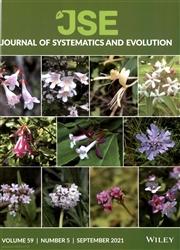Genetic formation of Sui populations in southwest China
IF 2.9
1区 生物学
Q1 Agricultural and Biological Sciences
引用次数: 0
Abstract
The Sui people living in Guizhou province have a unique ethnic culture and population history due to their long‐time isolation from other populations. To investigate the genetic structure of Sui populations in different regions of Guizhou, we genotyped 89 individuals from four Sui populations using genome‐wide single nucleotide polymorphisms arrays. We analyzed the data using principal component analysis, ADMIXTURE analysis,

中国西南地区隋代种群的遗传形成
生活在贵州省的隋族由于长期与其他人群隔绝,形成了独特的民族文化和人群历史。为了研究贵州不同地区水族人群的遗传结构,我们使用全基因组单核苷酸多态性阵列对来自四个水族人群的 89 个个体进行了基因分型。我们使用主成分分析、ADMIXTURE分析、f统计、qpWave/qpAdm、TreeMix分析、fineSTRUCTURE和GLOBETROTTER对数据进行了分析。我们发现,贵州的水族种群在遗传上具有同质性,并与讲傣语的噶代种群、讲苗语的苗族以及中国南方的一些古老种群有着密切的遗传亲缘关系。隋人的祖先中,33.5%-37.9%与黄河流域农民有关,62.1%-66.5%与东南亚有关,这表明东亚北部相关祖先的南下影响了说傣语的隋人的形成。未来在中国南方发表更多的古代基因组学研究成果,可以有效地进一步了解隋人的人口历史和人口结构。
本文章由计算机程序翻译,如有差异,请以英文原文为准。
求助全文
约1分钟内获得全文
求助全文
来源期刊

Journal of Systematics and Evolution
Agricultural and Biological Sciences-Ecology, Evolution, Behavior and Systematics
CiteScore
7.40
自引率
8.10%
发文量
1368
审稿时长
6-12 weeks
期刊介绍:
Journal of Systematics and Evolution (JSE, since 2008; formerly Acta Phytotaxonomica Sinica) is a plant-based international journal newly dedicated to the description and understanding of the biological diversity. It covers: description of new taxa, monographic revision, phylogenetics, molecular evolution and genome evolution, evolutionary developmental biology, evolutionary ecology, population biology, conservation biology, biogeography, paleobiology, evolutionary theories, and related subjects.
 求助内容:
求助内容: 应助结果提醒方式:
应助结果提醒方式:


